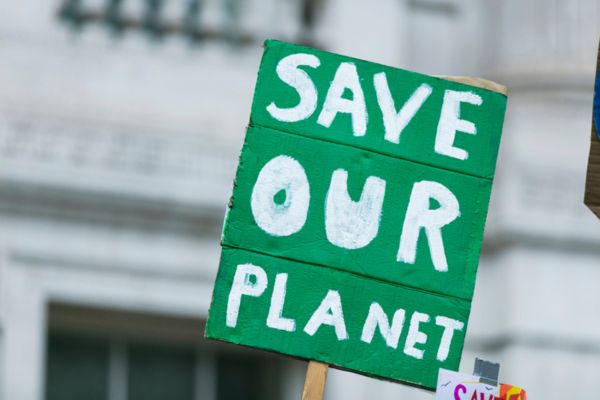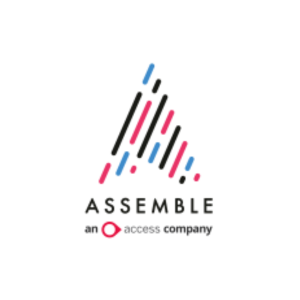Insights
INSIGHTS
All Topics
My Account
How power mapping can improve charity campaigns
02 Jun 2023by Joe Lepper
Mapping where power lies within organisatons is proving increasingly effective for charity campaigns and leadership. In this article, we show charities how they can use power mapping to create meaningful change
For charities and other organisations to be successful in their campaigning and influencing, it is vital to pinpoint who has the power to bring about meaningful change. This is called "power mapping".
Through power mapping, charities can better target their lobbying and campaigning, improve their strategy and leadership, save time, and improve allocation of resources long-term by making their work to influence decision makers more effective.
Below, we explain more about power mapping, how it works, and how it can create long-term change. We also look at power mapping in action, as academics look to find out who holds power in children’s policy.
Explaining power mapping
Power mapping is a highly visual process that allows charities and others to clearly identify the best people and organisations to target to effectively promote social change.
These maps show each person’s sphere of influence by mapping out their relationships and networks with each other. Put simply, the greater the number and quality of these networks, the more influence they have and the better they are for charities to target.
Power mapping highlights those who strongly support and oppose a charity’s mission. This helps assess the workload required to target them. Those who already back a charity’s cause can be more easily nurtured to become advocates. Meanwhile, those who are in opposition may require long term, more complex campaigning to change opinions over time.
Preparing to map power
The process of creating a power map can be more effective when used for an existing campaign. This is because the campaign already has clear goals and specific aims to better help target the most influential figures.
Power maps can also be used more broadly (see case study below) to assess who are the most influential figures in a particular policy area, such as social care or the environment.
The process needs to involve all those in a charity’s campaign team to pool their knowledge and to ensure they are aware of who the most influential people on the map area. These campaigners will also be familiar with the issues involved and how best to target different stakeholders. Other research, such as analysing policy documents and noting names mentioned, can be useful.
People and organisations on the map can be divided into groups:
-
Decision makers - those with direct authority to make decisions, including MPs, chief executives, and local councillors
-
Influencers – those that decision makers listen to and take advice from, including journalists, civil servants, and community leaders
-
Organised groups – these are formal groups, such as other campaigners and researchers that can help a charity’s cause
-
Unorganised social groups – these are stakeholders who are not formally organised but have an interest in an issue, such as parents, local residents, and patients
Finding the right tools
Power maps can be created either digitally or using old fashioned pens and paper or a whiteboard. Additional sheets of paper, or pages on a screen can also be used to spell out how best to target those in power.
Among those providing tools to help charities to power map is the Social Change Agency. It has created a power analysis canvas, where charities can note down their agenda as well as the opposing agenda. It gives the example of the policy idea of expanding the provision of free school meals to pupils. There is a clear policy divide here among those in power. Some believe it is too expensive to fund, while others believe it is an investment worth making for children’s wellbeing and health.
Through Social Change Agency’s power matrix, charities can add in people of influence, both supporters and opponents. Using a horizontal axis, they can measure how strongly they back or oppose a cause. Those in the middle are more likely to be swayed, while those at the end of the opposing agenda section will require more time and complex campaigning. This matrix also has a vertical axis to show what needs to happen to influence each individual or organisation.
Case study – mapping power in children’s policy
A group of academics have created a power map of the most influential people in children’s policy, which is vital for charities and others looking to have their say on issues ranging from combating child poverty, improving teacher training and reforming social care.
Called the Interdependence of Independence: A Network Map of Children’s Services this maps out “the many individual and organisational national actors” in children’s services.
It was created in 2021 from analysing more than 1,000 publicly available connections between policy makers, public, private and third sector organisations, and other notable individuals with influence.
This found that in 2021 Josh MacAlister was the most “highly connected” individual among politicians and civil servants. He is the Chair of the independent review of children’s social care, which presented its final report last year that went on to influence government policy around social care reform.
This research also found that teacher training charity Teach First, social work training charity Frontline, and schools charity Ark are among the most connected and influential organisations in children’s policy.
The map has been developed by academics from universities in Sheffield, Essex, Dundee, Northumbria, and the Open University.
Criteria for inclusion on the map includes whether they are listed as a supporter, funder, or partner of another organisation and whether they have a formal official role, such as board member or role in major policy reviews.
More on this topic
07 Mar 2025by Laura Stanley
An introvert’s guide to networking
27 Feb 2025by Laura Stanley
Charity Spotlight: Dr Anton Mari Lim, President, Yellow Boat of Hope Foundation
Recommended Products
Our Events
Charity Digital Academy
Our courses aim, in just three hours, to enhance soft skills and hard skills, boost your knowledge of finance and artificial intelligence, and supercharge your digital capabilities. Check out some of the incredible options by clicking here.





















